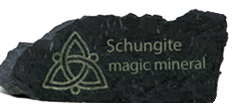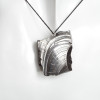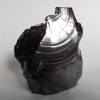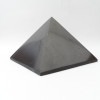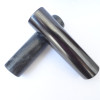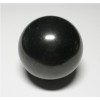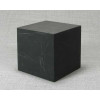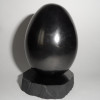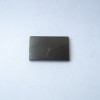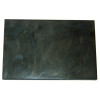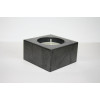Interesting facts about shungite.
The properties and uniqueness of shungite
First of all, shungite is unique in terms of its composition. It's by the composition and structure that scientists explain its useful properties. The main component of shungite is carbon C. Beside carbon C, the mineral's composition also includes carbon C60, SiO2, TiO2, Al2O3, FeO, MgO , К2О, and S.
The age of the mineral is surprising. Researchers have established that the age of shungite is about 2 billion years. Another amazing fact arises from the old age of the mineral: divisiveness of shungite's origin. Scientists haven't determined yet where did this mineral come from to our planet. Anyway, 2 billion years ago there were no forests on the planet Earth, from which coal later appeared, - only protobacteria existed then in the oxygenless environment.
Shungite's unusual structure is determined as non-crystalline metastable non-grafitizeable, globular, fullerene-like. The main component of this structure is a globule with the size of 100-300 A0 (10-30 nano meters) – a fullerene. Those compounds owe their names to the engineer and designer Richard Buckminster Fuller, who erected structures in the shape of bulbaceous bounded polyhendrons. The presence of nano particles – fullerenes – in shungite opens up the widest perspectives of its use.
The uniqueness of the mineral is that, unlike diamond, graphites and carbine, a new form of carbon was detected it its composition – the C60 molecule contains fragments with five-fold symmetry (pentagons), which were not found in natural inorganic compounds before shungite. The fullerene molecule is an organic molecule, and a crystal formed by such molecules (fullerite) is a molecular crystal, which is a connecting link between the organic and inorganic substances.
Due to their net-ball-like structure, fullerenes are rolling, like molecule-sized balls, between friction surfaces and, thus, may be used as an ideal filling or ideal lubricant. It's become possible to create even the most fantastic materials of the future, combining various atoms and molecules within the carbon balls. Fullerenes may be used in rocket building, electronics, optoelectronics, machine building, manufacturing of technical products, computers, in medicine and other fields of nano technologies application. There is also an idea under discussion to create a medical drug whose injection into a tissue will allow to make selective effect on tumorous cells, preventing their further multiplication. Such an anti-cancer preparation may be synthesized based on water-soluble compounds of fullerenes and radioactive isotopes injected inside.
It's exactly because of the unique structure and composition of shungite that this rock possesses sorption, catalytic, bactericide properties, biological activity, ability to absorb and neutralize high-frequency electromagnetic radiation.
Shungite's ability to actively absorb oxygen has numerous practical confirmations, and to interact with it actively at indoor temperatures in water and in the air. Shungite as a strong restorer absorbs oxygen from water. In the process of chemical interaction with that oxygen, atomical oxygen is formed, which is the strongest oxidizer and oxidizes absorbed organic substances to CO2 and H2O, and makes the shungite surface free for new sorption acts. Long-time effect of shungite on solved metals is explained by the fact that metals are transferred by shungite to a form of unsolved carbonates. This is caused by the process of oxidizing of organic substances to CO2.
One more unusual property of the stone shungite is its electric conductivity. This stone conducts electric current. One of the most widespread ways of checking that shungite is genuine is checking the electric conductivity of a sample with the help of a lamp and a battery bound into an electrical circuit.
Shungite made a surprise for researchers who found out another unusual phenomena, diamagnetism of the rock. Diamagnetism is one of the types of magnetism that is shown in the magnetization of a substance towards the external magnetic field acting upon it. Besides, diamagnetism gets stronger with the increase in the carbon content. Experiments also showed that shungite possesses the rarest characteristic for mountain rock – total absence of residual magnetization. Shungite's electromagnetic properties were the base for creating a wide class of electric conductive construction materials, possessing screening and radio absorbing properties.
There are no products to list in this category.
